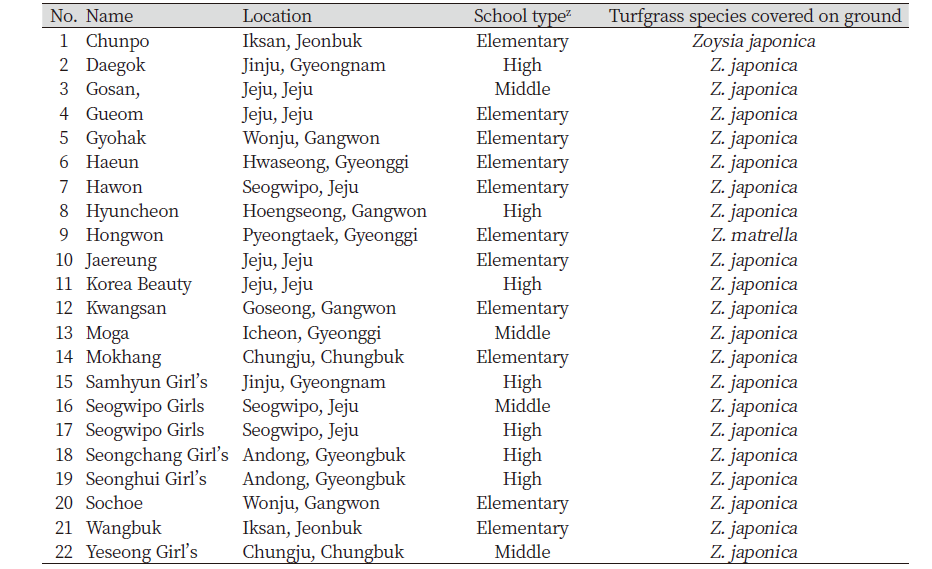Abstract
Natural turfgrass school playgrounds are increasing in number as alternatives to artificial turf and bare playgrounds because they are emotionally comfortable and environmentally safe for students. This study was conducted by visiting 22 elementary, middle, and high schools (17 land-based schools and 7 schools in Jeju) that have natural turfgrass playgrounds to investigate the turfgrass growth environment. The school grounds in Jeju island, which are managed by experts, are compared with those on land, which are self-managed by non-experts. The direction of the playgrounds was southwest and south in most schools. On the land and in the Jeju, the playground was sandy loam or loamy sand soil containing 60-80% of sand. The soil content of the schools in Jeju was higher in nutrients such as organic matter, phosphorus concentration, and cation exchange capacity (CEC) than the land-based schools. The turfgrass types of playgrounds surveyed were zoysiagrass (
Figures & Tables



